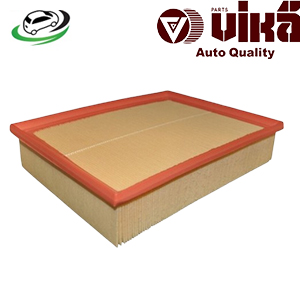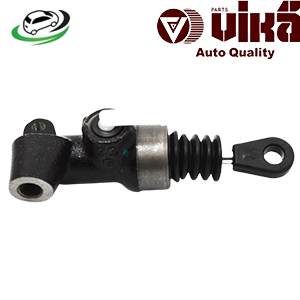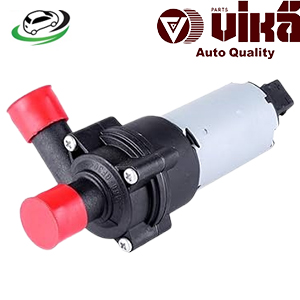-16%
Get AUDI 100 C4 Avant/80 B4 Avant Water Pump 78965561 in Kenya
The auxiliary water pump is a vital component in the engine cooling system of modern vehicles. It plays a significant role in regulating the engine’s temperature and ensuring optimal performance. By enhancing the flow of coolant, the auxiliary water pump helps maintain a consistent operating temperature, preventing overheating and extending the life of the engine. This comprehensive overview will delve into the functions, types, designs, maintenance, and importance of auxiliary water pumps.
2. Function of the Auxiliary Water Pump
The primary function of the auxiliary water pump is to circulate coolant throughout the engine and the cooling system. This pump aids in:
- Enhancing Coolant Flow: The auxiliary water pump works alongside the main water pump to boost coolant circulation, especially in larger or high-performance engines where additional flow is necessary. It helps ensure that the coolant reaches all engine components, including the cylinder head and exhaust manifold.
- Supporting Heating Systems: In many vehicles, the auxiliary water pump is also responsible for supplying coolant to the heating system. This function is particularly important for maintaining cabin comfort during cold weather, allowing for rapid heating of the passenger compartment.
- Maintaining Temperature Consistency: By regulating the flow of coolant, the auxiliary water pump helps maintain a stable engine temperature. This stability is crucial for preventing engine overheating and ensuring that all components operate efficiently.
- Facilitating Turbocharged Engines: In turbocharged engines, the auxiliary water pump is often used to circulate coolant to the turbocharger. This circulation helps prevent the turbo from overheating and prolongs its life by managing its temperature effectively.
3. Types of Auxiliary Water Pumps
Auxiliary water pumps come in various designs and types, each suited for different applications and engine configurations. The main types include:
- Electric Auxiliary Water Pumps: These pumps are powered by an electric motor and are commonly found in modern vehicles. They provide precise control over coolant flow and can be activated as needed, enhancing efficiency and reducing energy consumption.
- Mechanical Auxiliary Water Pumps: Driven by the engine’s belt system, mechanical auxiliary pumps rely on engine RPM to operate. While they are simpler in design, they may not provide the same level of control or efficiency as electric pumps.
- Variable Speed Auxiliary Water Pumps: Some modern vehicles utilize variable speed auxiliary water pumps that can adjust their flow rate based on engine temperature and demand. This adaptability enhances efficiency and performance.
- Integrated Auxiliary Water Pumps: In some designs, the auxiliary water pump is integrated with other components, such as the main water pump or the engine control module (ECM). This integration can simplify installation and improve overall system performance.
4. Design and Construction of Auxiliary Water Pumps
The design and construction of auxiliary water pumps are critical to their efficiency and performance. Key components include:
- Pump Housing: The housing is typically made from durable materials such as aluminum or plastic. It encases the internal components and provides a mounting point for the pump within the cooling system.
- Impeller: The impeller is the rotating component that generates flow. It is designed with curved blades that propel the coolant through the pump. The design and size of the impeller affect the pump’s flow rate and pressure.
- Motor (for Electric Pumps): In electric auxiliary water pumps, the motor is responsible for driving the impeller. High-quality motors are designed for longevity and efficiency.
- Seals and Gaskets: Seals and gaskets prevent coolant leaks and maintain pressure within the system. These components are made from materials resistant to heat and corrosion to ensure durability.
- Inlet and Outlet Ports: The inlet port draws coolant into the pump, while the outlet port directs the coolant to the engine or heating system. Proper sizing of these ports is essential for optimal flow.
5. Importance of Auxiliary Water Pumps
The auxiliary water pump is critical for several reasons:
- Engine Cooling Efficiency: By enhancing coolant flow, the auxiliary water pump contributes to more efficient cooling of the engine. This efficiency helps prevent overheating, which can lead to severe engine damage.
- Improved Performance: A well-functioning auxiliary water pump supports engine performance by ensuring that all components operate at the correct temperature. This consistency helps maintain power output and throttle response.
- Prolonged Engine Life: Maintaining optimal engine temperature is crucial for longevity. The auxiliary water pump plays a key role in preventing overheating and wear, ultimately extending the life of the engine.
- Heating System Functionality: The auxiliary water pump supports the heating system, ensuring that the passenger compartment heats up quickly during cold weather. This functionality enhances driver and passenger comfort.
- Turbocharger Protection: In turbocharged engines, the auxiliary water pump helps prevent turbo overheating, which can lead to turbo failure. Proper cooling of the turbocharger is essential for maintaining engine performance and reliability.
6. Signs of a Failing Auxiliary Water Pump
Identifying a failing auxiliary water pump is crucial to prevent engine damage. Common signs include:
- Overheating Engine: If the engine temperature rises above normal, it may indicate a malfunctioning auxiliary water pump. Insufficient coolant circulation can lead to overheating.
- Coolant Leaks: Visible coolant leaks around the pump or in the engine compartment may indicate a failing seal or gasket. These leaks can lead to a loss of coolant and subsequent engine overheating.
- Noisy Operation: Unusual noises, such as whining or grinding, may indicate a failing pump bearing or impeller. These sounds should not be ignored, as they may indicate impending pump failure.
- Dashboard Warning Lights: Many modern vehicles have sensors that monitor coolant temperature and pump operation. If a warning light illuminates on the dashboard, it’s essential to investigate the issue promptly.
- Poor Cabin Heating: If the vehicle’s heating system fails to provide adequate heat, it may be due to a malfunctioning auxiliary water pump. Insufficient coolant flow can prevent the heating system from functioning properly.
7. Maintenance of Auxiliary Water Pumps
Proper maintenance of the auxiliary water pump is essential for ensuring its longevity and performance. Key maintenance tips include:
- Regular Inspections: Periodically inspect the auxiliary water pump for signs of leaks, damage, or unusual noises. Early detection of issues can prevent costly repairs.
- Coolant Replacement: Regularly replacing the coolant in the engine helps maintain optimal performance and prevents corrosion within the cooling system. Follow the manufacturer’s recommendations for coolant replacement intervals.
- Check Hoses and Connections: Ensure that all hoses and connections in the cooling system are secure and free from leaks. Worn or damaged hoses can affect coolant flow and lead to pump failure.
- Monitor Temperature: Keep an eye on the engine temperature gauge. If the temperature rises unexpectedly, it may indicate an issue with the auxiliary water pump or cooling system.
- Consult a Professional: If any signs of malfunction occur, consult a qualified mechanic for a thorough inspection and necessary repairs. Addressing issues early can prevent more severe engine damage.
8. Replacing the Auxiliary Water Pump
Replacing an auxiliary water pump can be a straightforward process for those with mechanical skills. Here are general steps for replacement:
- Gather Tools and Supplies: Before starting, gather necessary tools, including wrenches, screwdrivers, and a replacement pump. Ensure the vehicle is parked on a level surface and the engine is cool.
- Disconnect the Battery: Safety first! Disconnect the negative terminal of the battery to prevent electrical shorts during the replacement process.
- Drain the Coolant: Place a container under the engine and drain the coolant from the cooling system. Follow manufacturer guidelines for proper coolant disposal.
- Remove the Old Pump: Locate the auxiliary water pump, which may be mounted near the main water pump or in a separate location. Disconnect any hoses or electrical connections and remove the pump from its mounting.
- Install the New Pump: Position the new auxiliary water pump in place, ensuring it aligns with mounting points. Reconnect hoses and electrical connections as needed.
- Refill the Cooling System: After installing the new pump, refill the cooling system with the appropriate coolant. Bleed any air from the system according to manufacturer instructions.
- Reconnect the Battery: Once everything is in place, reconnect the battery and start the engine. Monitor for leaks and ensure the system operates correctly.
- Check Operation: After installation, observe the engine temperature and pump operation to ensure everything is functioning as expected.
9. Conclusion
The auxiliary water pump is a critical component in maintaining engine cooling and performance. Its ability to enhance coolant flow, support heating systems, and protect turbochargers makes it essential for modern vehicles. Regular maintenance and timely replacement of the auxiliary water pump are crucial for preventing overheating, prolonging engine life, and ensuring optimal performance.
Understanding the functions, types, and importance of auxiliary water pumps allows vehicle owners to appreciate their role in engine health. By taking proactive measures to maintain the auxiliary water pump and recognizing signs of failure, drivers can protect their investment and ensure their vehicles operate at peak efficiency. In summary, the auxiliary water pump is an indispensable part of the engine cooling system that contributes significantly to vehicle performance and longevity.
Follow us on Facebook for more parts.




Reviews
Clear filtersThere are no reviews yet.